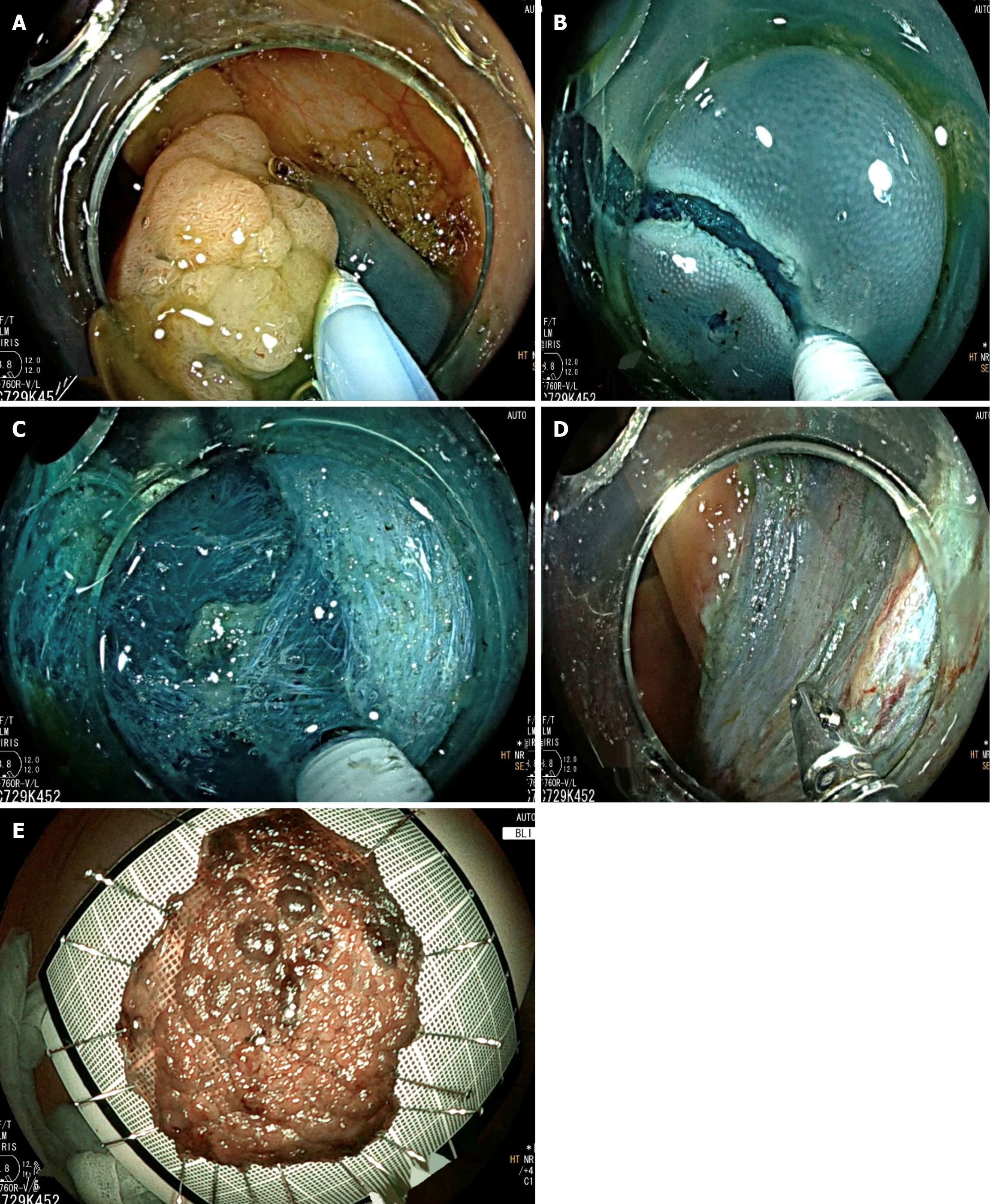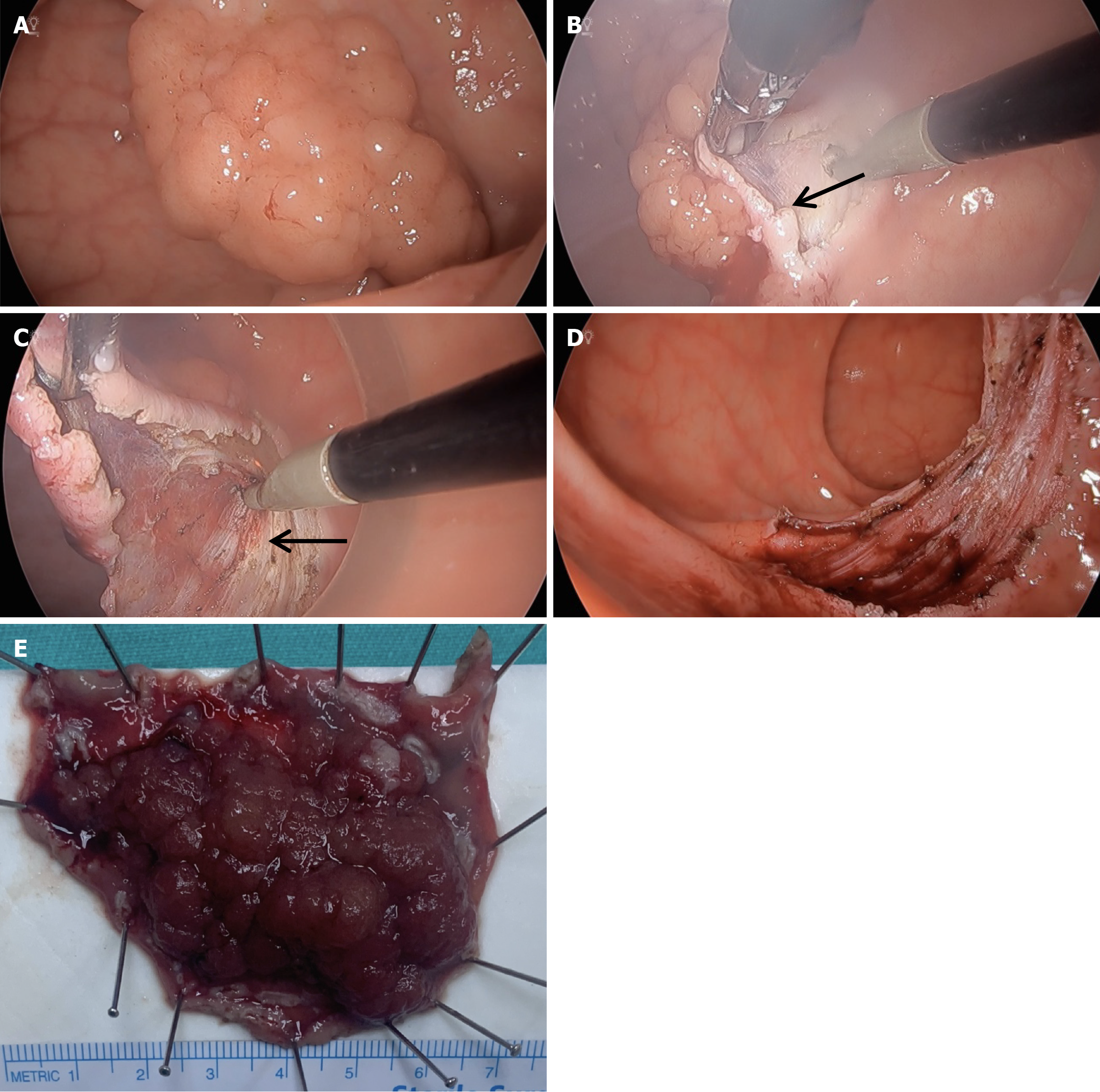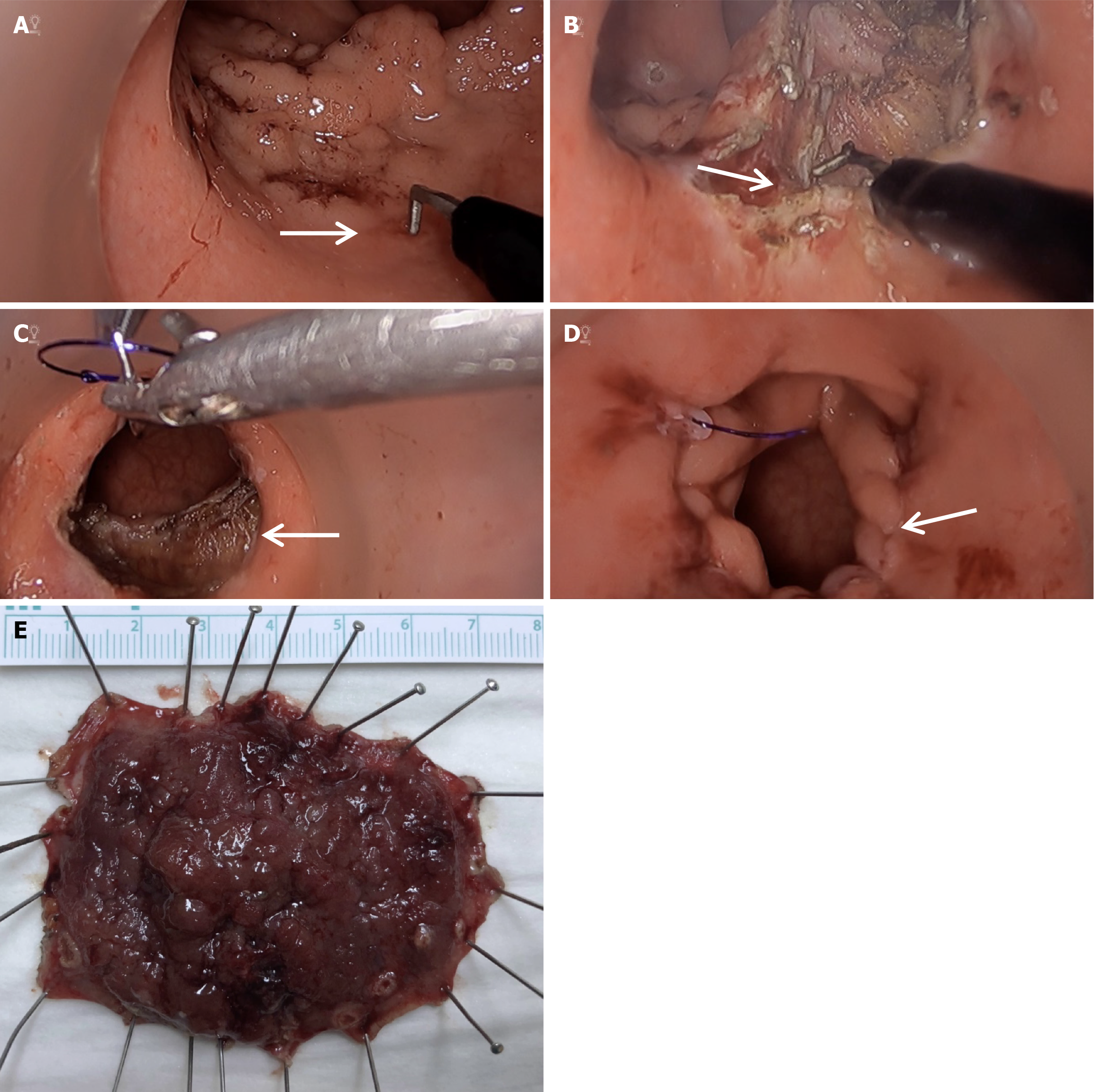Copyright
©The Author(s) 2025.
World J Gastrointest Endosc. Oct 16, 2025; 17(10): 107792
Published online Oct 16, 2025. doi: 10.4253/wjge.v17.i10.107792
Published online Oct 16, 2025. doi: 10.4253/wjge.v17.i10.107792
Figure 1 Sequential steps of endoscopic submucosal dissection for an early-stage colorectal lesion.
A: Submucosal injection is performed to lift the lesion from the muscularis propria; B: Circumferential mucosal incision is initiated around the lesion; C: Submucosal dissection is carried out using an endoscopic knife; D: Hemostasis is achieved with coagulation forceps; E: Resected early-stage colorectal lesion after complete submucosal dissection.
Figure 2 Steps of transanal endoscopic microsurgery-assisted endoscopic submucosal dissection for a rectal lesion.
A: Endoscopic view of the nodular lesion; B: Submucosal dissection is initiated (black arrow); C: Muscularis propria layer is preserved during dissection (black arrow); D: Post-dissection view showing the complete resection site with intact muscularis propria; E: Resected lesion pinned on a board for pathological assessment.
Figure 3 Transanal endoscopic microsurgery procedure for a rectal lesion.
A: Circumferential marking around the lesion (white arrow); B: Incision of the muscular layer during full-thickness excision (white arrow); C: Post-resection defect following full-thickness excision (white arrow); D: Appearance of the rectal wall after defect closure with sutures (white arrow); E: Gross specimen of the resected lesion pinned for pathological evaluation.
- Citation: Ilhan E, Cengiz F. Endoscopic submucosal dissection, transanal endoscopic microsurgical submucosal dissection, and transanal minimally invasive surgery in rectal lesions. World J Gastrointest Endosc 2025; 17(10): 107792
- URL: https://www.wjgnet.com/1948-5190/full/v17/i10/107792.htm
- DOI: https://dx.doi.org/10.4253/wjge.v17.i10.107792















